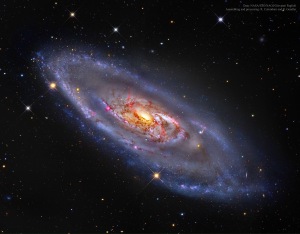NOTE: these notes are the result of a personal endeavour. Feel free to follow them, but I take no responsibility for the outcome. Do this at your own risk. Thanks to those who have followed these instructions and fedback improvements to the original text!
OK. Disclaimers out of the way, here goes…
At a recent star party at Kelling Heath, I got chatting to members of the Crawford AS, and was inspired to look into how I could hook up my trusty Argo Navis to Sky Safari. A lot of the pieces of the puzzle were scattered around the net, but I didnt find a definitive guide… so here goes :
Why
By hooking up argo navis to sky safari you can
- Sync sky safari to the scope, as you move the scope, sky safari scrolls the sky to follow your every move
- Click on an object and select “Goto”, argo will then give you the usual direction indicators to locate the object
- Dispense with uploading User object lists
- Probably a lot of other things
You are basically combining the strengths of Argo Navis with some serious compute power in the way of an Android tablet.
How
At a high level, you are extending the serial port on the Argo Navis to “broadcast” the serial communications over a wireless connection. This wireless connection can be Bluetooth or WiFi, I chose to go the Bluetooth route, which forces me down the Android route for my tablet (Apple dont support enough Bluetooth features). The Wifi route should work for Android, iOS and Windows.
Heres what you need to buy
Sky Safari Plus or Pro, I use Plus (£14)
You can just use the Serial cable that came with the Argo and a DB9 male to Male adapter. If you want to make your own cable, get an RS232 to Bluetooth adapter, heres the one I bought from Amazon for around £20. In the. US these are sold on the excellent site USConverters.com
You’ll then also need an RJ11 to DB9 (Male) adapter , I paid around £5
You’ll also then need a suitable length of ADSL cable (note these are wired differently to the standard Argo Navis serial cable)
OK, I went shopping, what next
The RS232 adapter comes preconfigured to 19200 BAUD with some generic name and default pin code. For this to work, the adapter needs to run at 9600 BAUD. Its nice to give your adapter a friendly name and a pin code that isn’t 1234
Note: you need to flick the little switch on the Bluetooth adapted to BCE while programming it (revert to BTE once done)
All the resources, datasheets and instructions for this are here, in summary, though you need a teminal emulator such as teraterm, you then connect to the Bluetooth adapter over Bluetooth (using the standard windows method) and initiate a serial connection. Once connected, you need to get the device into “AT mode”, so you can issue some commands to it.
Usually this is done by typing “>>>” into teraterm
Once in AT mode issue the command “AT” and you should get some response such as “OK”
Use the following commands to reprogram the adapter:
baud=9600
pin=4321 (obviously using your own choice of pin code)
name=myname (again use your imagination here)
Thats it, all done !
Making your own serial cable
If you are using the original serial cable that came with the Argo, then you can skip to the next section. Otherwise, you need to replicate the wiring of the original cable using the RJ11 to DB9 adapter. Only 3 of the 4 wires are used and these go into pins 5,2 and 3 of the DB9 connectors.
Look here for RS232 pinouts. The Argo Navis manual shows the pin outs of the serial ports.
Connecting it all up
Make sure the switch on the Bluetooth adapter is set to BTE.
Plug the Argo navis serial port 1 (or 2) to the RS232/bluetooth adapter.
Using the Argo menus, configure serial port 1 (or 2) to 9600 baud and set the type to “meade”
On the tablet, instal sky safari and pair with the RS232 bluetooth adapter using the normal android bluetooth pairing method
In sky Safari, set up the telescope as “Meade LX200 Classic” and “Alt/Az Goto”
On the telescope menu hit “Connect”, this is the moment of truth. If you get an issue connecting, check your settings in Argo, and on Sky Safari, but the likely cause is the RS232 cable wiring is wrong
When out observing:
1) Star Align Argo Navis as normal
2) Connect sky safari to the telescope using the telescope menu
3) Put the Argo in “MODE CATALOG” , “FROM PLANETARIUM” mode
4) Select an object in sky safari and click “Goto”
5) Argo will now tell you where to point as normal
6) Leave Argo in “FROM PLANETARIUM” mode, whenever you select a new object in Safari, it will automatically be sent to Argo ready for you to push to (I assume if you use ServoCat or similar to drive your scope, the that will kick in
If you select “Lock” in sky safari, then as you move the scope around the sky, the crosshairs will follow your every move
Gloves off approach
If you want to build your own RS232 Bluetooth adapter, its probably quite simple … Argo Navis uses RS232 at +/- 5volts (Gary from Wildcard confirmed this), a Max3232 adapter board (sold for use with Arduino/RPi) will bring that down to 3.3 volt logic level suitable for an HC-06 bluetooth module. I purchased the parts to do this, and maybe I’ll get round to it one cloudy night. If I do I’ll write it up here … watch this space.
Clear Skies








